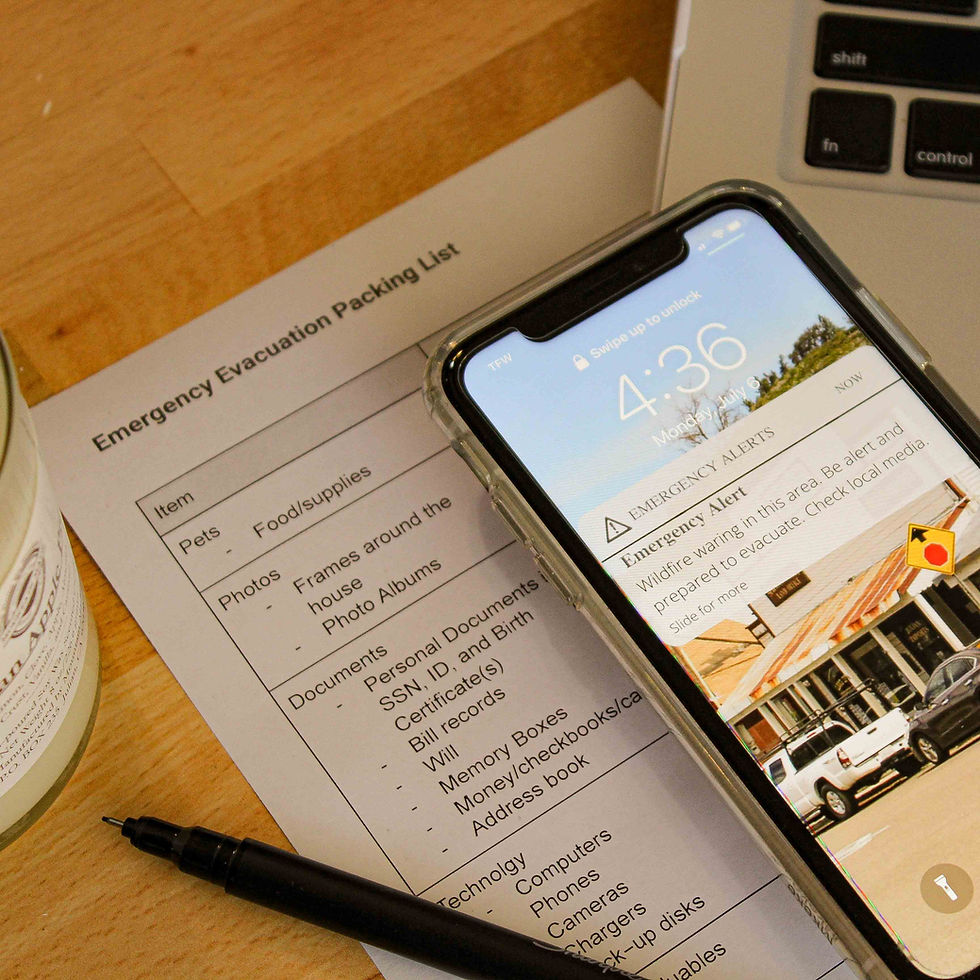Where to Get Emergency Information
- Eva Hatch

- Aug 12, 2020
- 2 min read
Updated: Jan 26, 2022

Living in the San Diego backcountry presents a constant threat of a wildfire. It is really easy to become consumed by the fear of fire. The more prepared you are, the lower your stress level will be. As technology has improved, so has the availability of information pertaining to wildfires. As time has readily shown, we cannot rely solely on government agencies to warn us of natural disasters in our community during the initial stages of an incident. It can take up to five minutes for a report to be processed through 911 operators and dispatch before it reaches first responders. Depending on the remoteness of the location, it could take first responders up to 20 minutes to arrive. Once an incident is confirmed, it then takes time to compose, verify, and vet a public notice before it is released. This means an official public warning may not be released for over 40 minutes. Each minute of delay could be crucial in saving lives. We have to take the initiative to gather emergency information for ourselves and our neighbors. Let’s dive into a few resources that could be helpful.
Be aware of your soundings.
Fire season is at its peak summer through late fall. If you see a smoke column or smell a strong odor of smoke, be alert. If you hear sirens for extended periods of time, be alert. If you see water tenders, multiple fire engines, prison crews, and/or a fire dozer(s) go by with their lights and sirens on, be alert. If you see or hear small planes and helicopters with water buckets under them at low altitudes, be alert. These are all signs that there is a fire.
Julian Alerts
Julian Alerts has designed multiple ways of notifying the residents of Julian and the surrounding area about local emergencies. Julian Alerts is strictly a neighbor-helping-neighbor system. Our only goal is to inform the community about emergencies as fast as we can. Julian Alerts was started by Julian locals and will be run by Julian locals.
Get more information at:
Website: http://www.julianalerts.com/
Facebook Page: https://www.facebook.com/julianalerts
Facebook Group: https://www.facebook.com/groups/600576173393402/
CHP Traffic
CHP officers post real-time updates on the CHP website for all incidents on California highways. Being that all major roads going through our community are highways, there is a high probability that a major incident in our area will involve CHP. Julian and the surrounding area fall under the Border Communication Center.
Radio
In real time, you can listen to firefighters’ radio communications during incidents. You can do this by buying a scanner (learn the laws beforehand) or listening online through Broadcastify. This is the best way to get information. While all information shared on the radio is public information, please be respectful of information you may learn while listening in. To help you better understand what is being said on the radio, I recommend learning the fire station and apparatus numbers in your area.
Webcams
UCSD and SDG&E have both set up cameras around San Diego County. About every five minutes a new photo is taken and posted online for the public to see. This is a great way to see if there is a fire, and it can give you a general idea of where it is located.




Comments